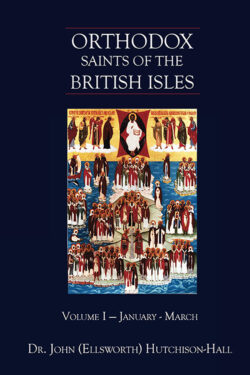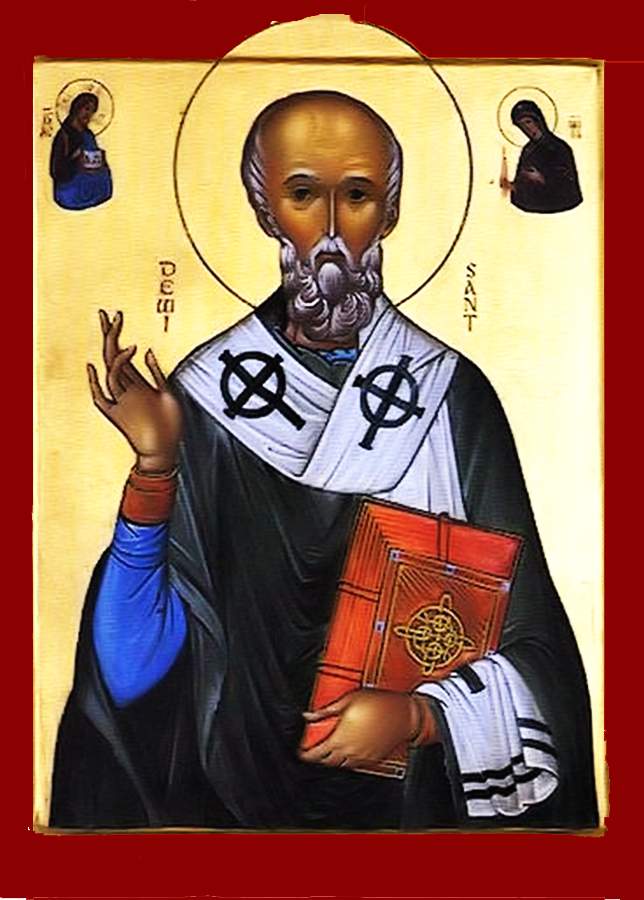
Orthodox Saints of the Pre-Schism
See of Rome
1st March (NS) — 17th February (OS) 2024
DONATUS, SECUNDIAN, ROMULUS, and COMPANIONS, a group of over eighty Christians martyred in 304 during the Diocletianic Persecution at Porto Gruaro, a part of present-day Metropolitan Venice.
FAUSTINUS and COMPANIONS, (Date Unknown), a group of forty-five martyrs who are believed to have been martyred in Rome. Unfortunately, besides St. Faustinus’ name there are no further details extant.
FINAN of LINDISFARNE, an Irishman by birth, he succeeded St. Aidan (31st August) as Bishop of Lindisfarne. In his earlier life as a monk at Iona, St. Finan was a staunch supporter of the Celtic ecclesiastical traditions, opposing the successors of St. Augustine of Canterbury (27th May), who strove to bring English customs into closer conformity with those of Rome. He converted Kings Peada of Mercia (r. 655–656) and Sigeberht of Essex (r. c. 653–660/1) to Christianity, and along with St. Cedd (26th October), and others, evangelised the most southern regions of England. St. Finan reposed 661.
FINTAN, St. Fintan lived as an anchorite at Clonenagh in Leinster. In time, numerous disciples, including St. Comgall of Bangor (10th May), and St. Columba (12th December) gathered around St. Fintan who became their abbot. He has been compared by the Irish annalists to St. Benedict of Nursia (11th July) and is styled “Father of the Irish Monks”. St. Fintan reposed 603.
FORTCHERN, (Fifth Century), one of St. Patrick’s (17th March) earliest converts in Ireland. St. Fortchern devoted himself to the service of St. Patrick and is said to have refused to be consecrated bishop out of humility. Unfortunately, the details of his life have been intertwined with that of St. Loman (vide infra), hence nothing further about this saint can be said with any degree of certainty.
GUEVROCK (GUEROC, KERRIC), (Sixth Century), a native of Brittany, St. Guevrock was a disciple of St. Tudwal (30th November), later Abbot of Loc-Kirec, and at one point an assistant of St. Paul Aurelian (12th March) as well.
HABET-DEUS, a Bishop of Luna in Tuscany, of which only ruins exist today. As far as is known St. Habet-Deus was martyred by the Arian Vandals circa 500.
LOMAN (LUMAN), the first Bishop of Trim in Meath, St. Loman is said to have been a nephew of St. Patrick (17th March). He seems to have reposed in the mid-fifth century Unfortunately, the details of his life have been intertwined with that of St. Fortchern (vide supra), hence nothing further about this saint can be said with any degree of certainty.
SILVINUS, a member of court, who gave up his life in the world to preach the Gospel, enlightening the area near Thérouanne in the north of Gaul. After some forty years of unceasing work, during which he paid the ransoms of many slaves, he went to the monastery of Auchy-les-Moines, where he lived the few remaining years of his life as a monk reposing circa 720.
Get your copy of Orthodox Saints of the British Isles today.
Available at Amazon or your favourite e-bookstore.
ALBINUS (AUBIN) of ANGERS, A pious child of a noble Gallo-Roman family, who in his mid-twenties received monastic tonsure at Tincillac Abbey, later serving as its abbot for a quarter century. St. Albinus was consecrated Bishop of Angers circa 529, serving until his repose circa 549. Having condemned consanguineous marriage, St. Albinus participated in the third Council of Orleans in May 538, at which impediments to marriage were settled.
DAVID, our father among the saints David of Wales, known in Welsh as Dewi Sant, is the patron saint of Wales and considered by many to be one of the most illustrious of the ancient British bishops. He is also known as the Dewi Ddyfrwr (David the Water Drinker) due to his habit of drinking only water and the creation of many holy wells associated with his life.
Though there is no reliable Life extant, legend has it that St. David was born to noble parents in South Wales and educated by St. Paulinus (23rd November), the disciple of St. Germanus of Auxerre (31st July). He was a staunch opponent of the Pelagian heresy, and the founder of the See of St. David’s or Menevia. To which, when appointed to succeed St. Dubricius (14th November), he transferred the primary Welsh Bishopric from Caerleon. The foundation of a dozen monasteries and many miracles are attributed to St. David, and he is said to have been zealous in encouraging discipline among both clergy and laity, and to have presided over the Synod of Brefi circa 560. The date of his repose is listed as anywhere from the mid-sixth century to circa 601. His relics survive and are enshrined in St. David’s Cathedral, St. Davids, Pembrokeshire, Wales.
HERMES, ADRIAN, and COMPANIONS, several Christians in Numidia (in present-day Algeria) martyred circa 290 during the reign of Emperor Maximian (r. 286–305).
LEO of ROUEN, a Bishop of Rouen, he retired from his See to evangelise in Navarre, and the Basque provinces. St. Leo was martyred by Saracens near Bayonne in 900. Legend says after his beheading, St. Leo picked up his head and walked with it to where he had last preached.
LEOLUCAS (LEO LUKE), abbot of a monastery in Corleone in Sicily, who is also venerated in Calabria where he had been a member of a monastic community. St. Leolucas reposed in the early tenth century, reputedly at the age of one hundred.
LUPERCUS (LUPERCULUS), possibly a bishop, most sources state St. Lupercus was martyred circa 300, though Church of England priest, hagiographer, and all round scholar Sabine Baring Baring-Gould (†1924) places his martyrdom during the Decian Persecution (250). His veneration was centred in the Armagnac region, St. Lupercus was also venerated at Tarbes in the Hautes-Pyrénées region.
MARNOCK (MARNANUS, MARNAN, MARNOC), a native of Ireland, St. Marnock spent time at Iona with St. Columba (9th June), and later served as a bishop, though the name of the See is lost to time. He reposed in Annandale in Scotland circa 625, and was much venerated on the Scottish border. Kilmarnock in Scotland is named for him.
MARTYRS of AFRICA, (Date Unknown), a group of thirteen martyrs in Africa, of whom nothing is known but the names of these ten:
Abundantius, Adrastus, Agapius, Charisius, Donatilla, Donatus, Fortunus, Leo, Nicephorus, and Polocronius.
MARTYRS of ROME, a group of two hundred and sixty Christians sentenced to road work on the Salarian Way in Rome. In 269, they were no longer of use to the Romans and were publicly martyred in the amphitheatre.
MONAN, St. Monan began as a disciple of St. Adrian (4th March) at St. Andrews in Scotland, and later was a missionary along the Firth of Forth. Along with six thousand other Christians, he was slain by the Danes in 874. His relics were held in great veneration at Innerny (present-day St. Monans) in Fife, the place of his martyrdom, and were famous for miracles.
RUDESIND (ROSENDO), a son of Count Gutierre Menéndez in Galicia in present-day Spain, St. Rudesind was consecrated Bishop of Mondoñedo, it is said at the age of eighteen, and later was translated to Compostella. He successfully helped to defend the region from both the Vikings and Moors. A plot lead by a corrupt cousin led him to resign his See, and St. Rudesind spent the rest of his life founding monasteries and serving as abbot. He reposed in 977.
SIVIARD, a monk at Saint-Calais Abbey on the River Anisola (now called the Aniole) near Le Mans, where his father was Abbot. St. Siviard was the author of a life of St. Calais (1st July), the Abbey’s founder, and succeeded his father as Abbot. St. Siviard reposed circa 729.
SWITHBERT, one of the twelve monks who accompanied St. Willibrord (7th November) to Friesland in 690. Following three fruitful years of evangelism, St. Swithbert was consecrated a missionary bishop at Ripon in 693. He returned to evangelise along the Rhine in the area of present-day Düsseldorf. St. Swithbert also founded a monastery on the island of Werth in the Rhine which later became the Kaiserswerth district of Düsseldorf. St. Swithbert spent the final years of his life at this monastery and reposed in 713.
Prior to the Schism the Patriarchate of Rome was Orthodox, and fully in communion with the Orthodox Church. As Saint John of Shanghai and San Francisco +1966 said “The West was Orthodox for a thousand years, and her venerable Liturgy is far older than any of her heresies”.
Details of British Saints excerpted from Orthodox Saints of the British Isles.
Details of continental saints from these sources.
In many cases there are several spelling versions of the names of saints from the British Isles. I use the Oxford Dictionary of National Biography version as the primary version with the more prevalent version in parenthesis e.g. Ceadda (Chad) of Lichfield.



